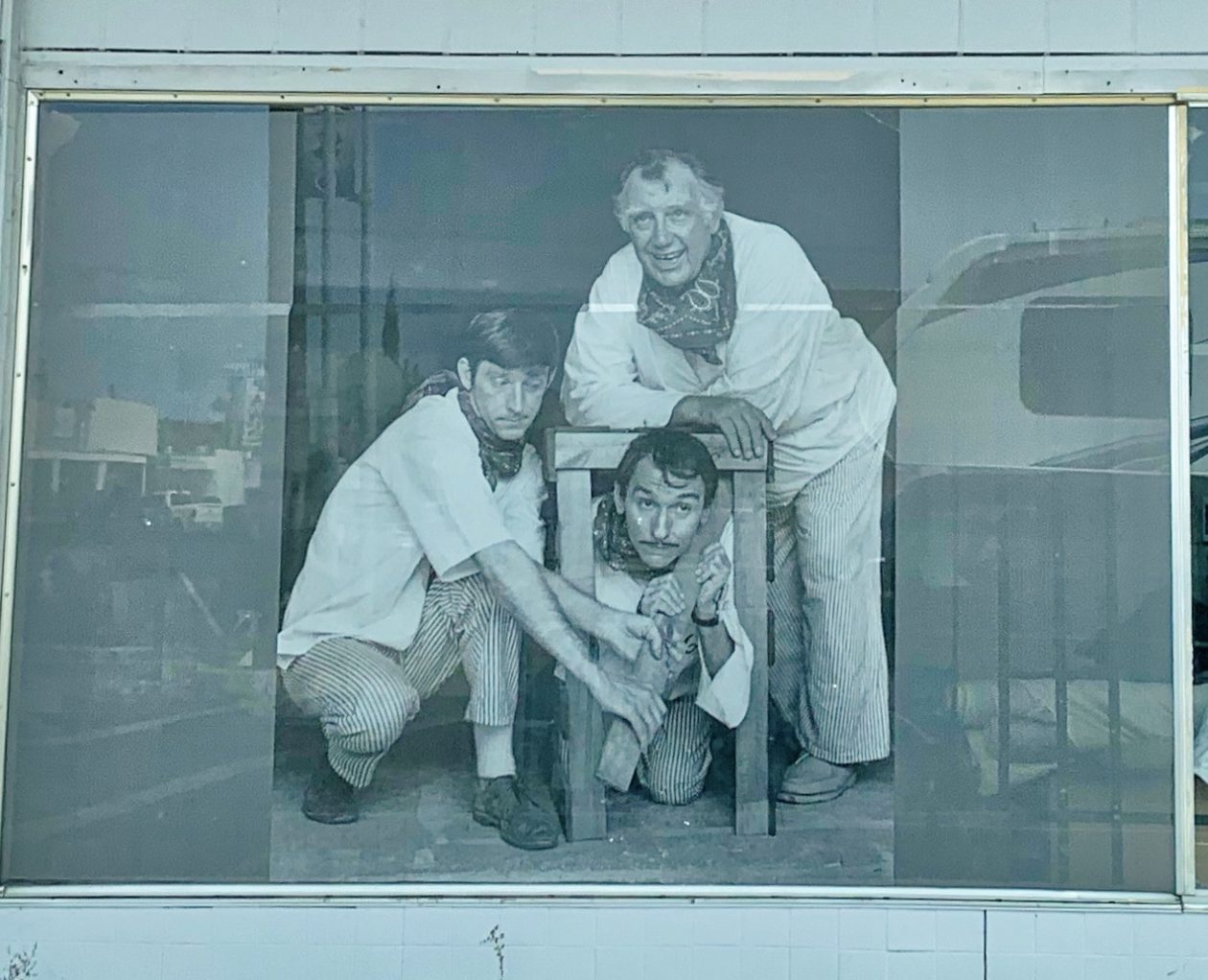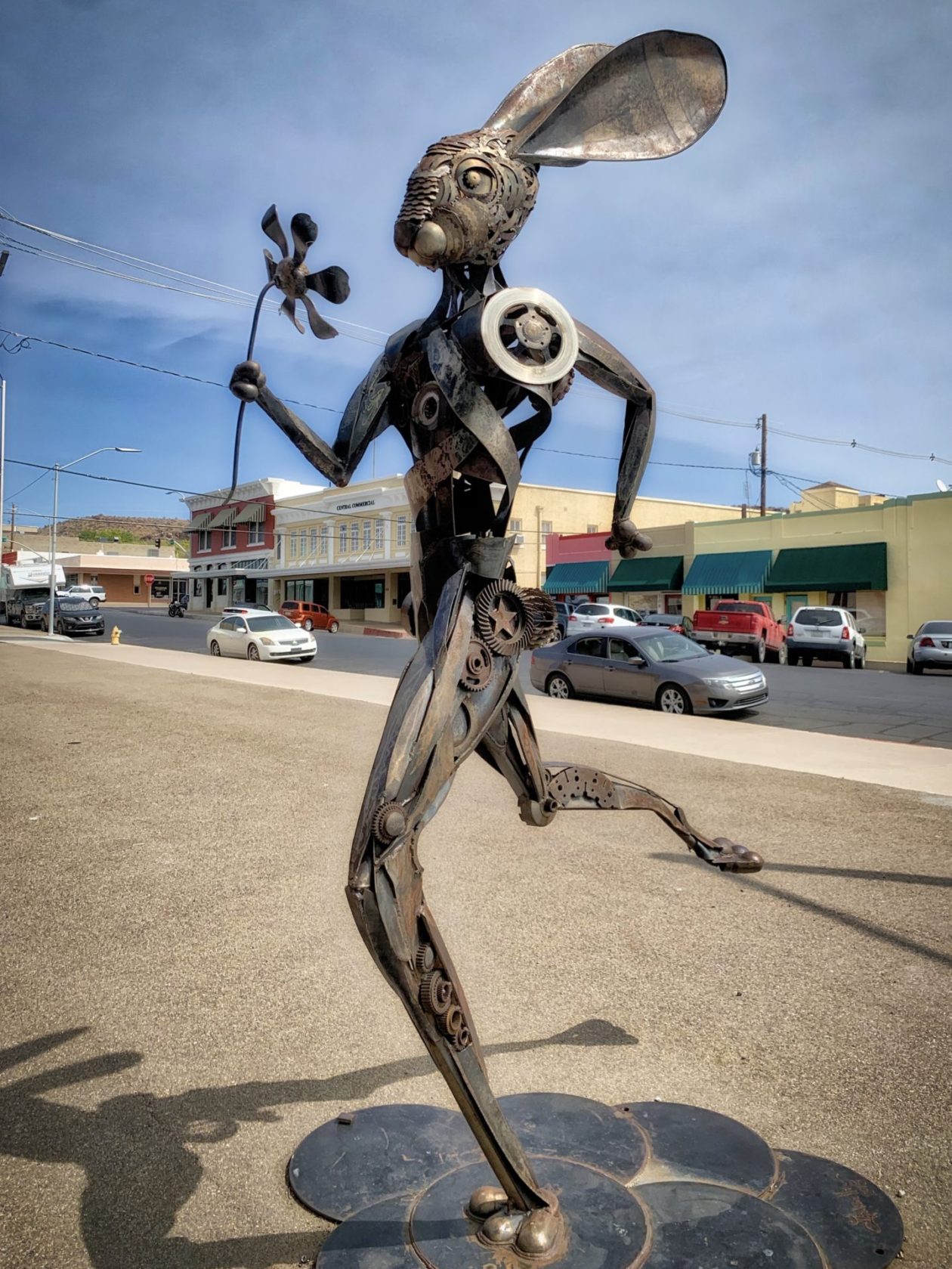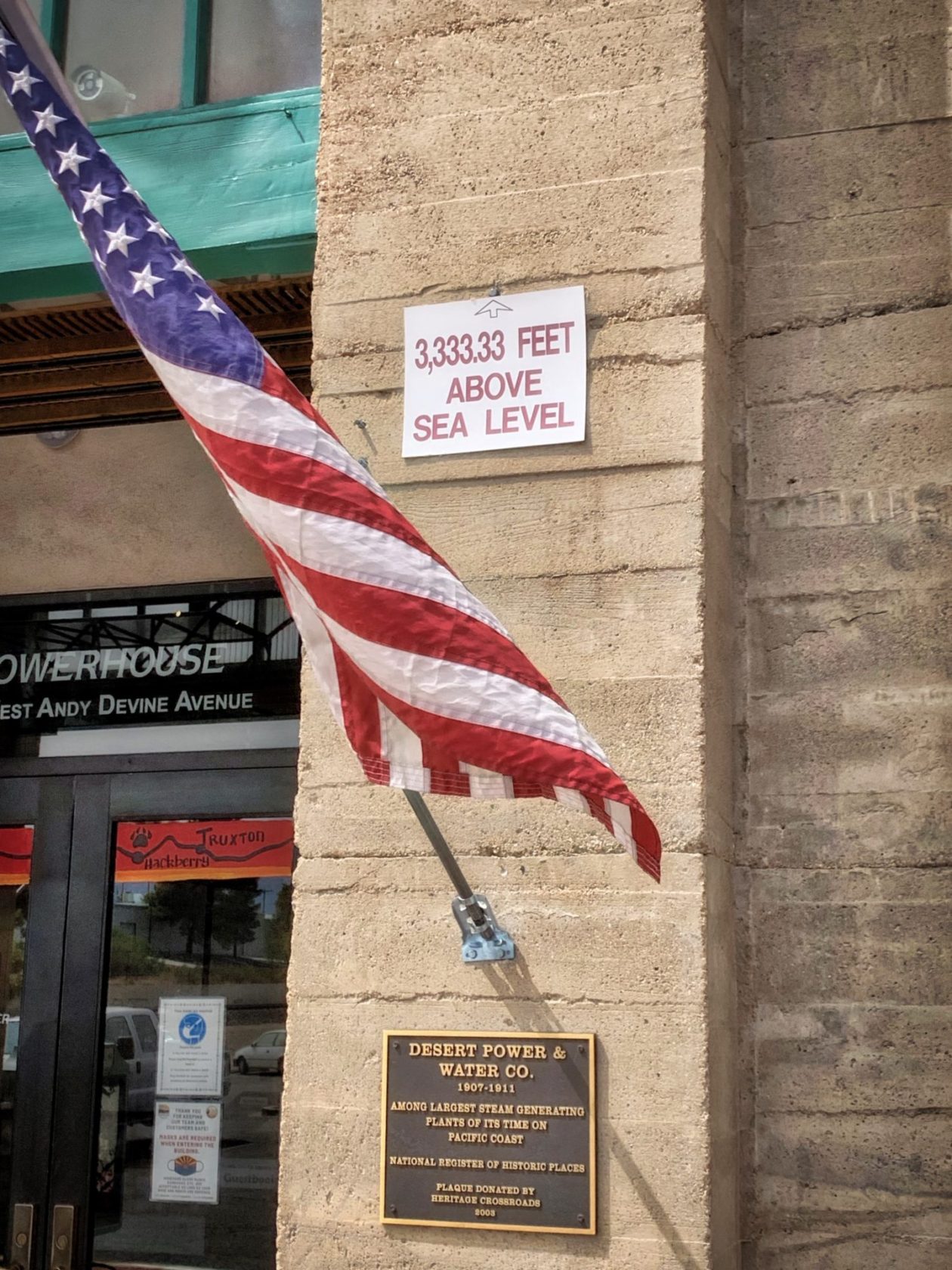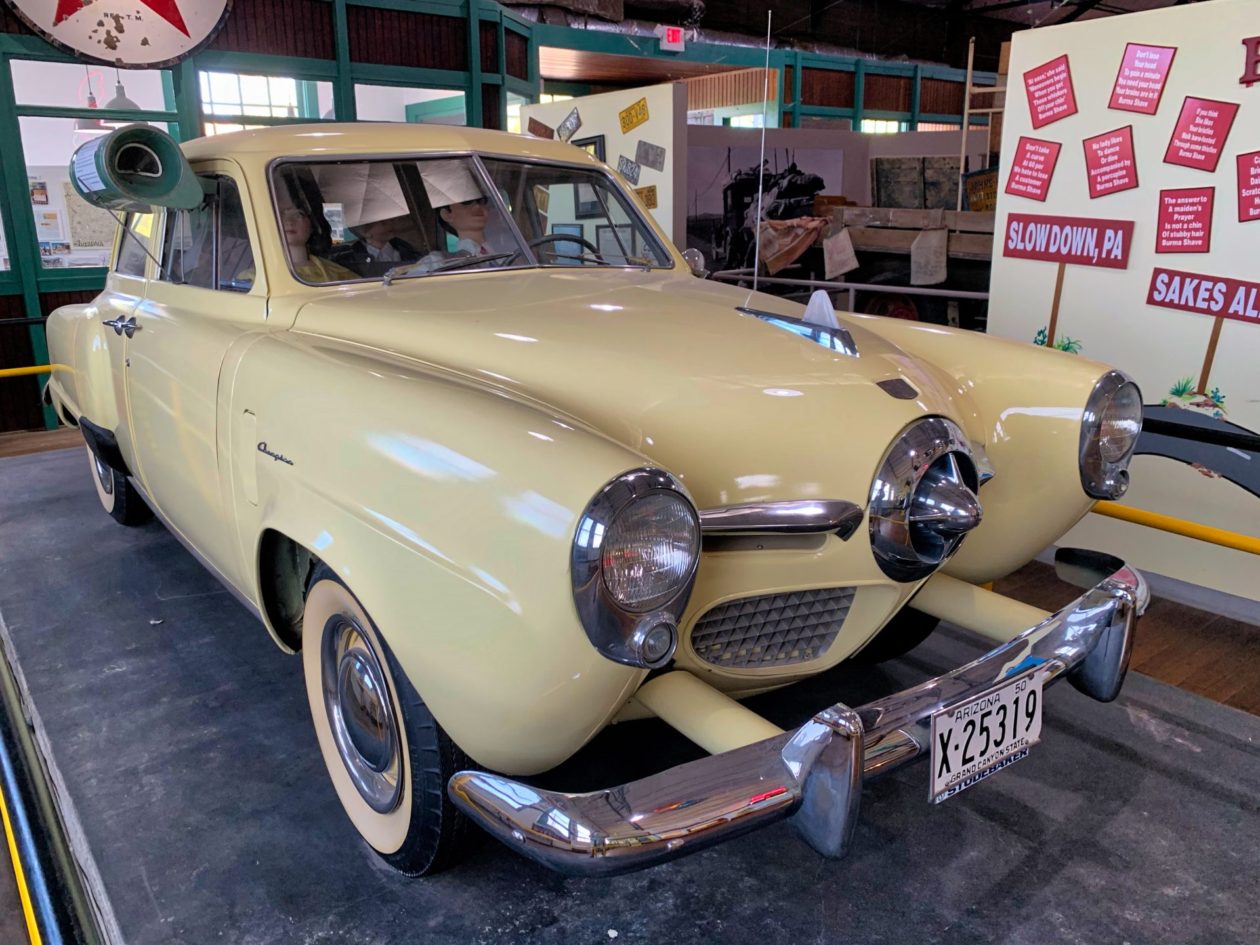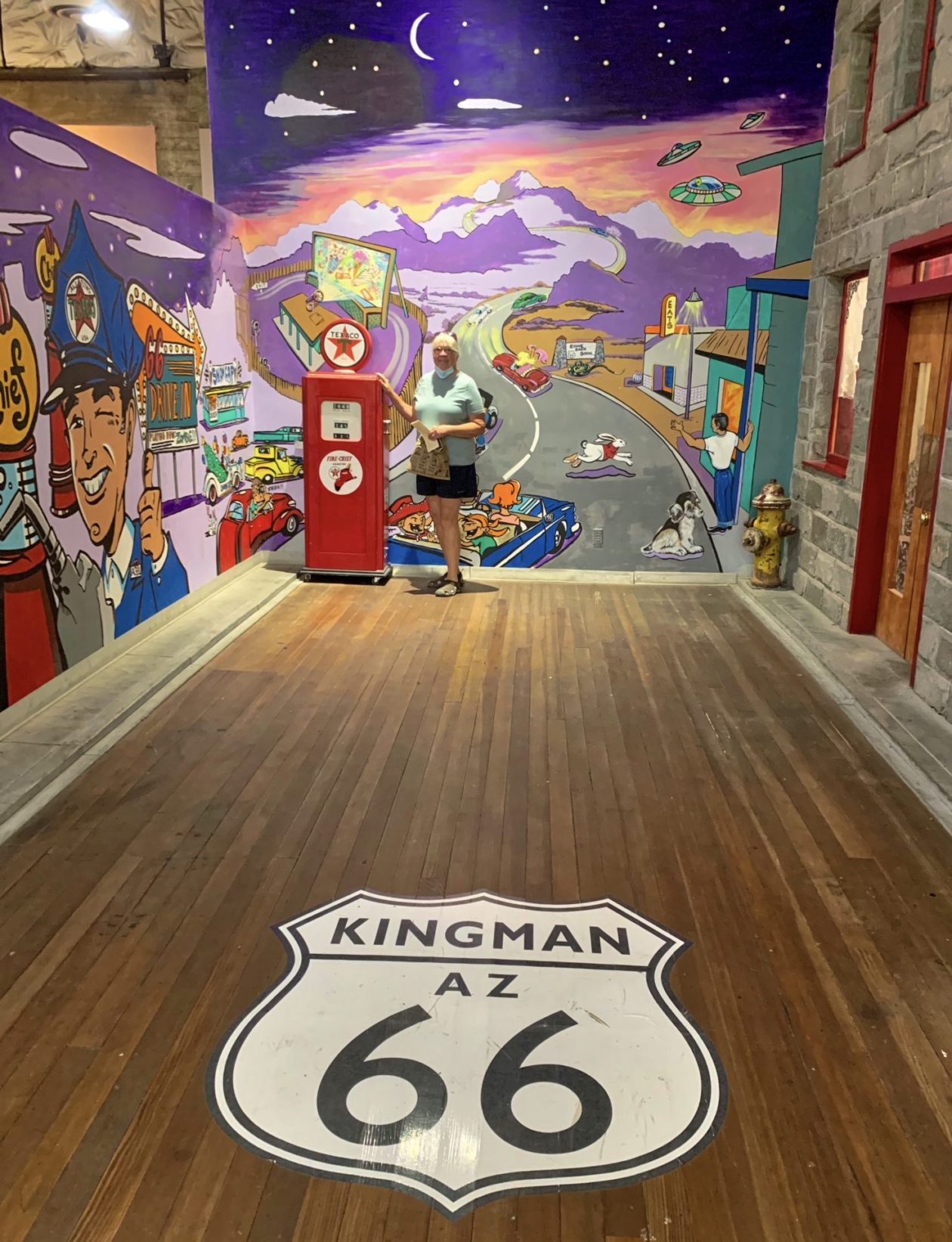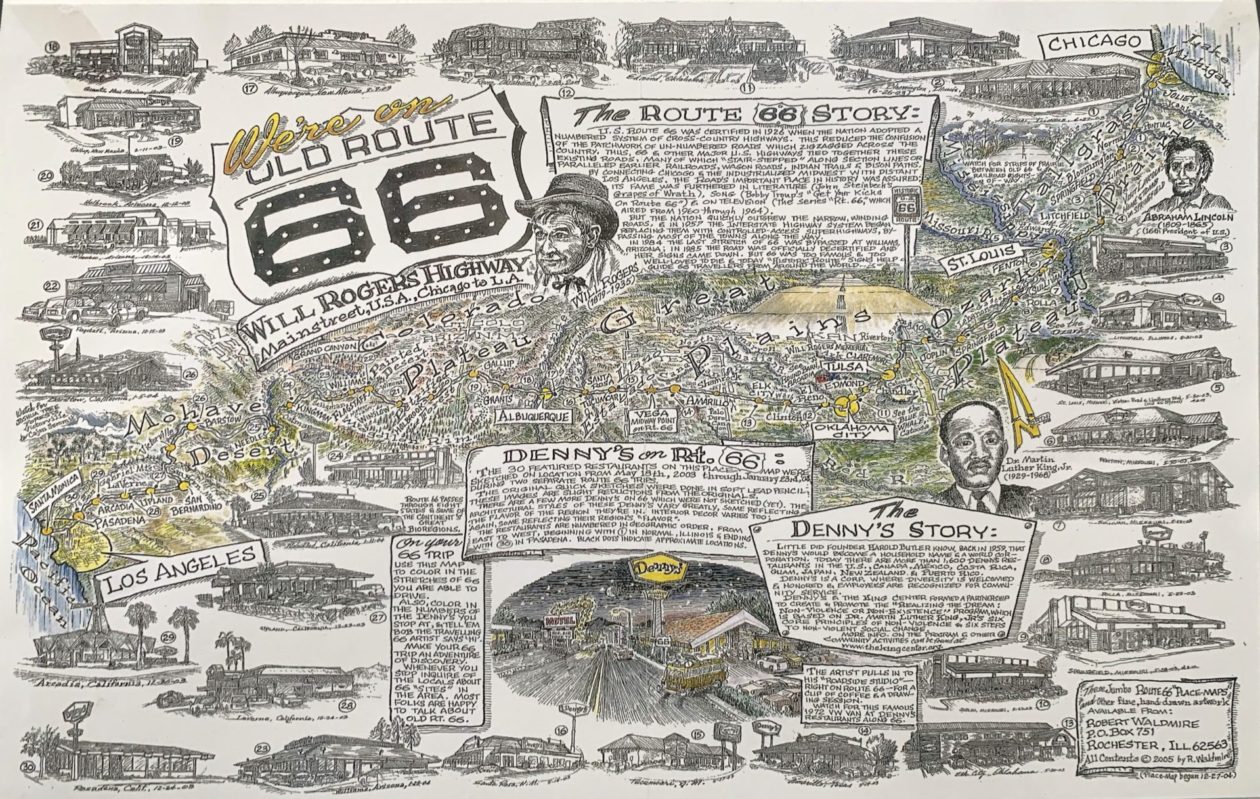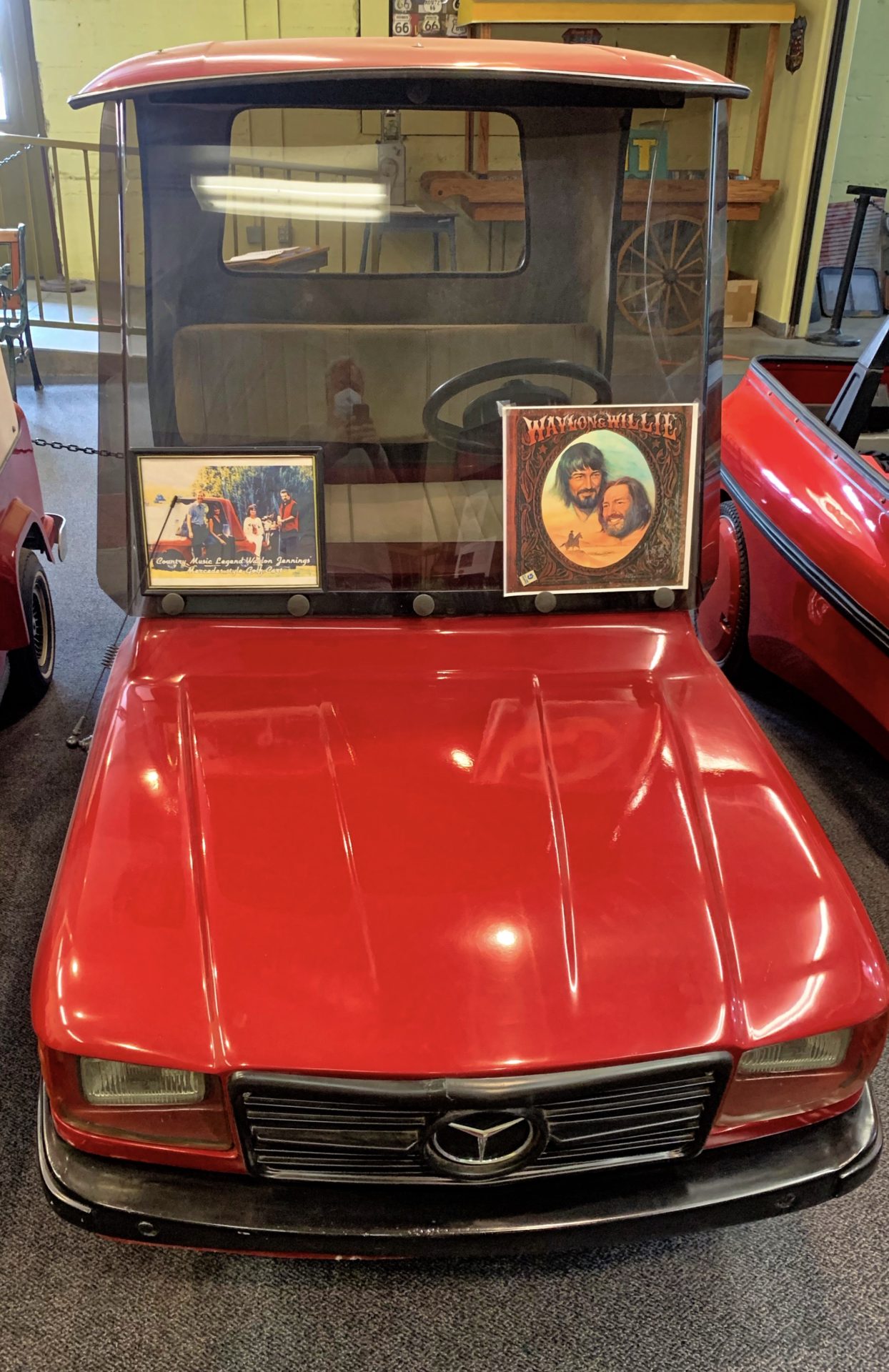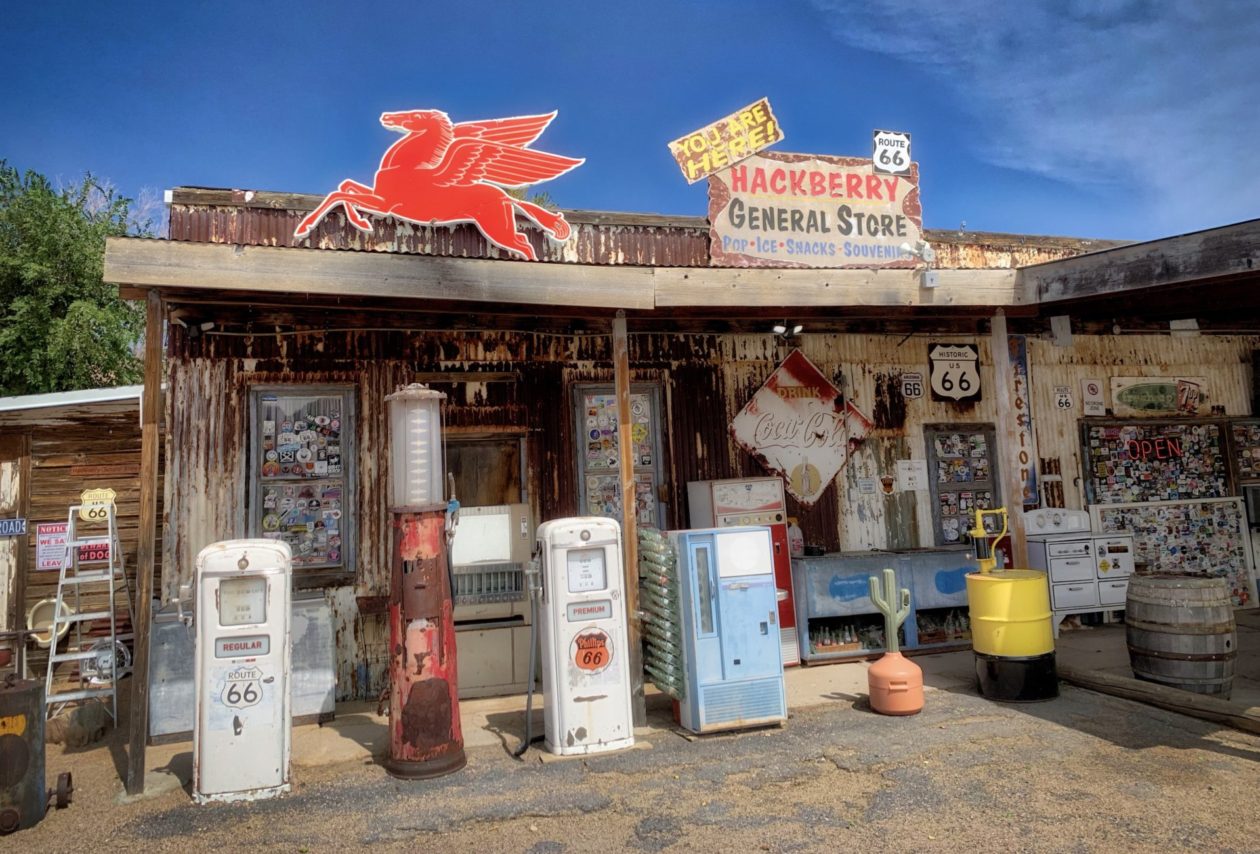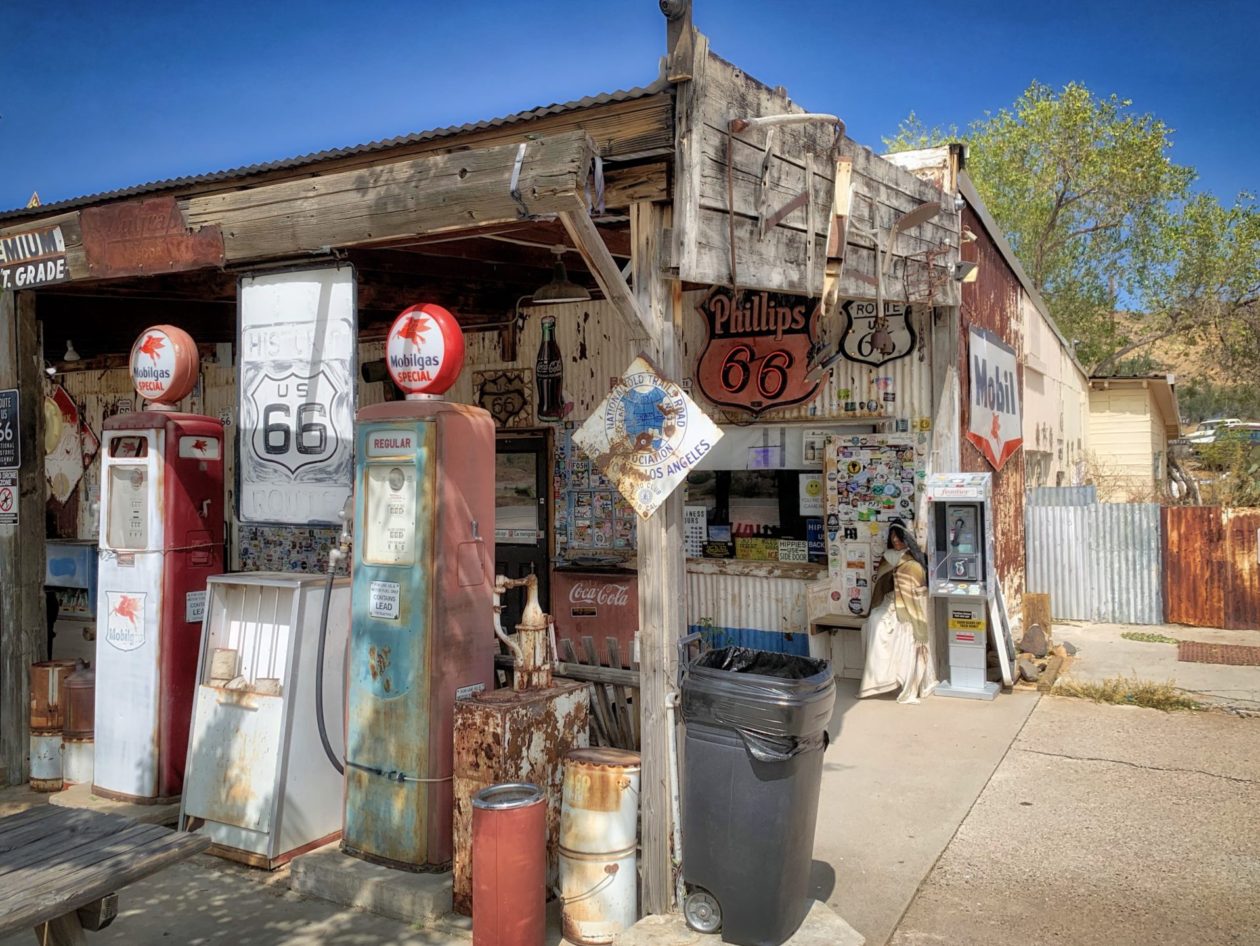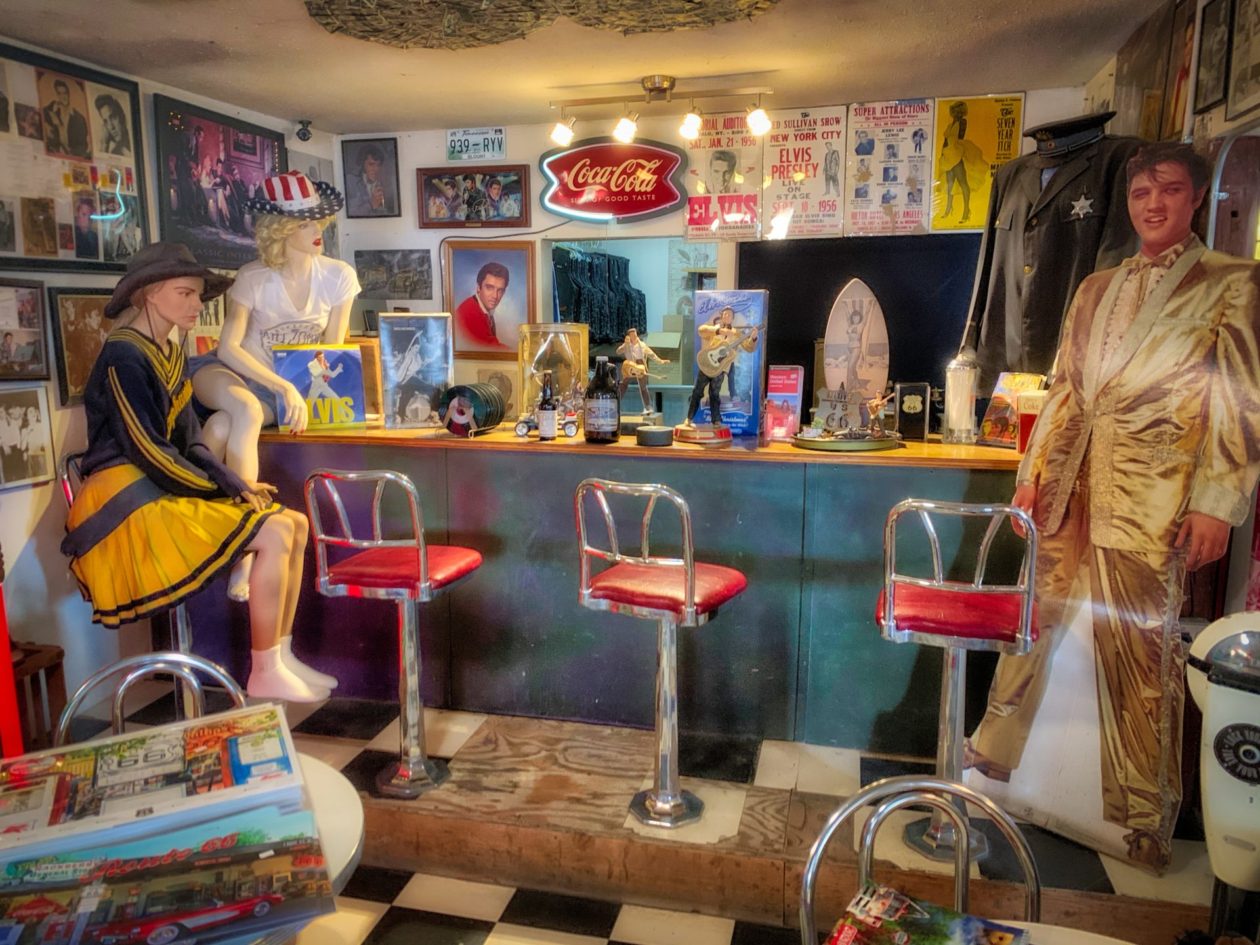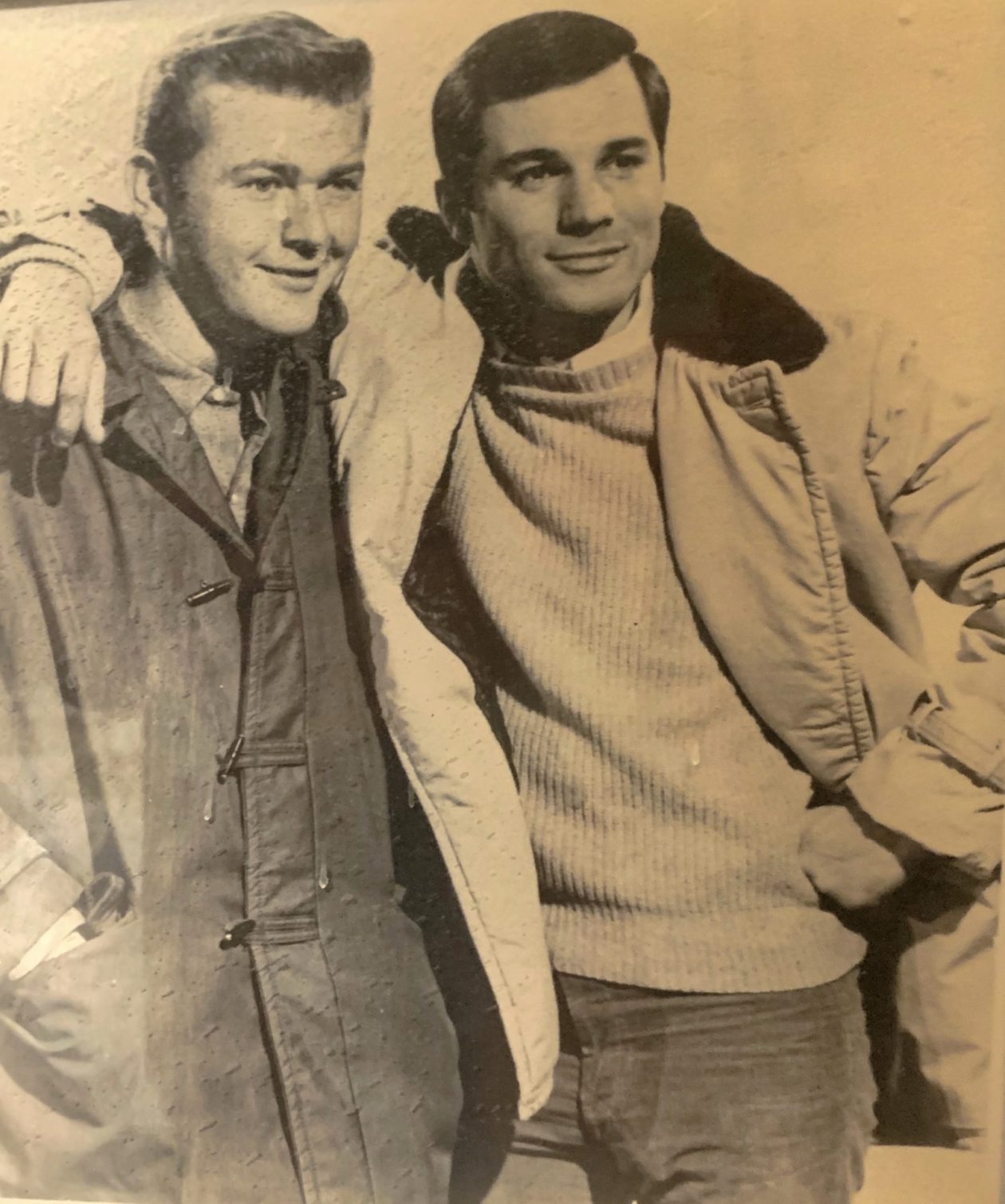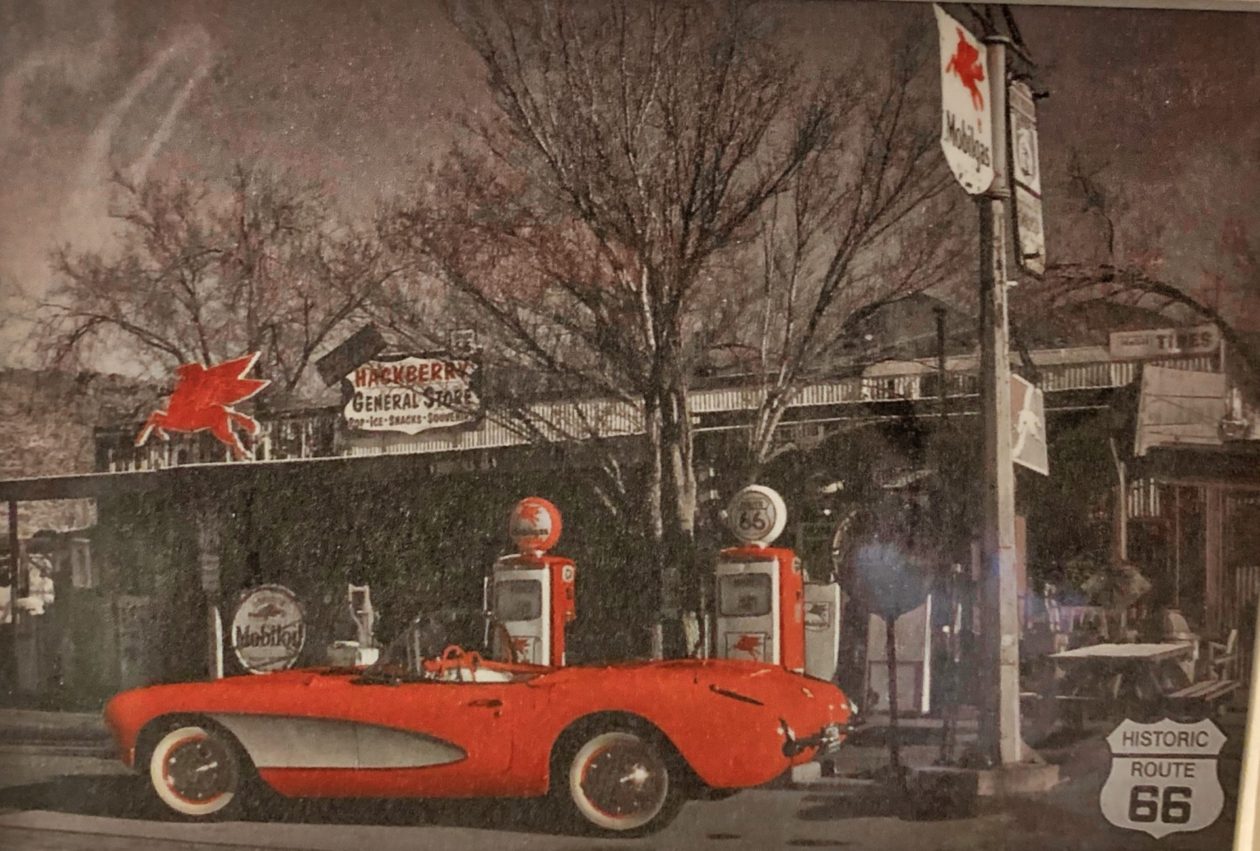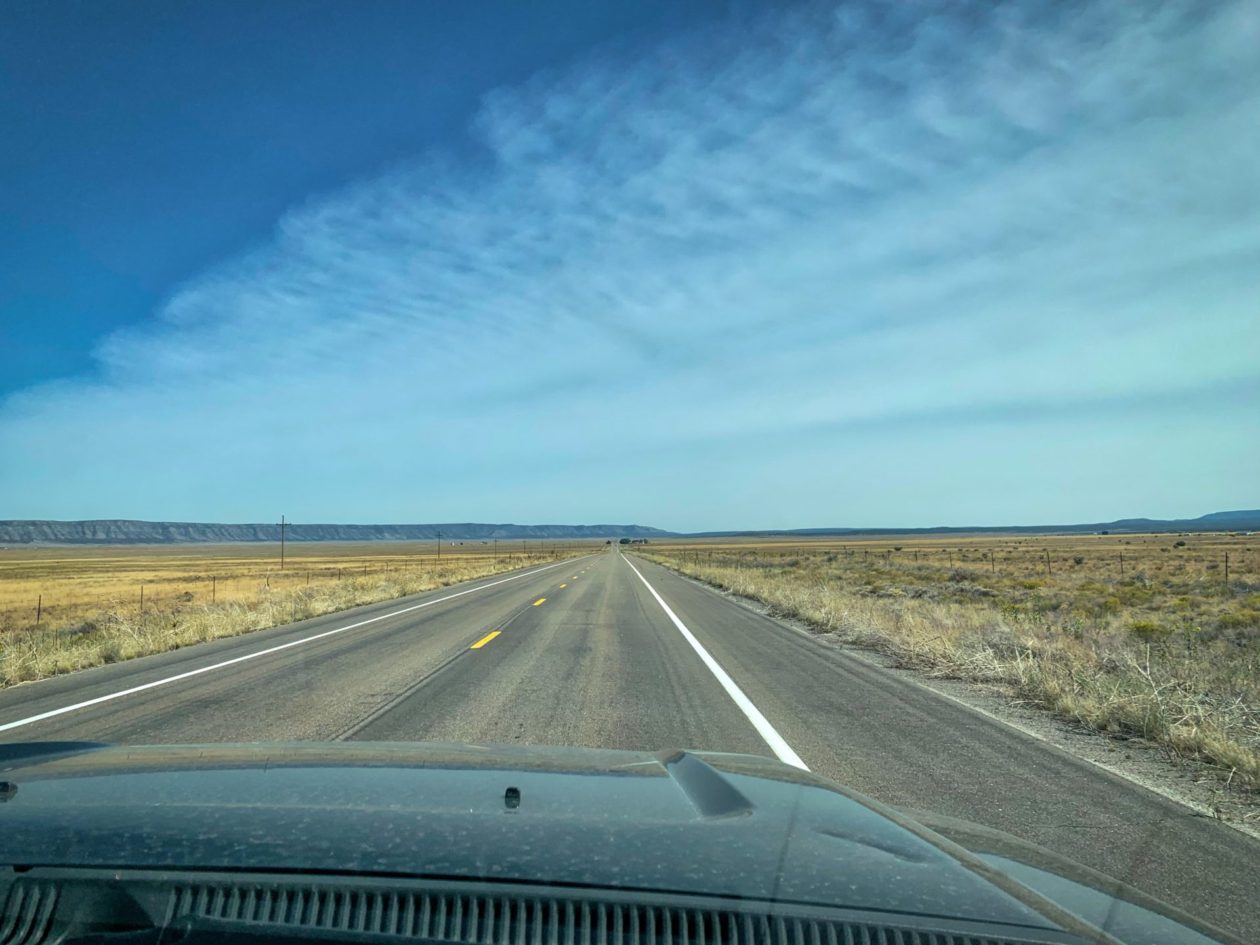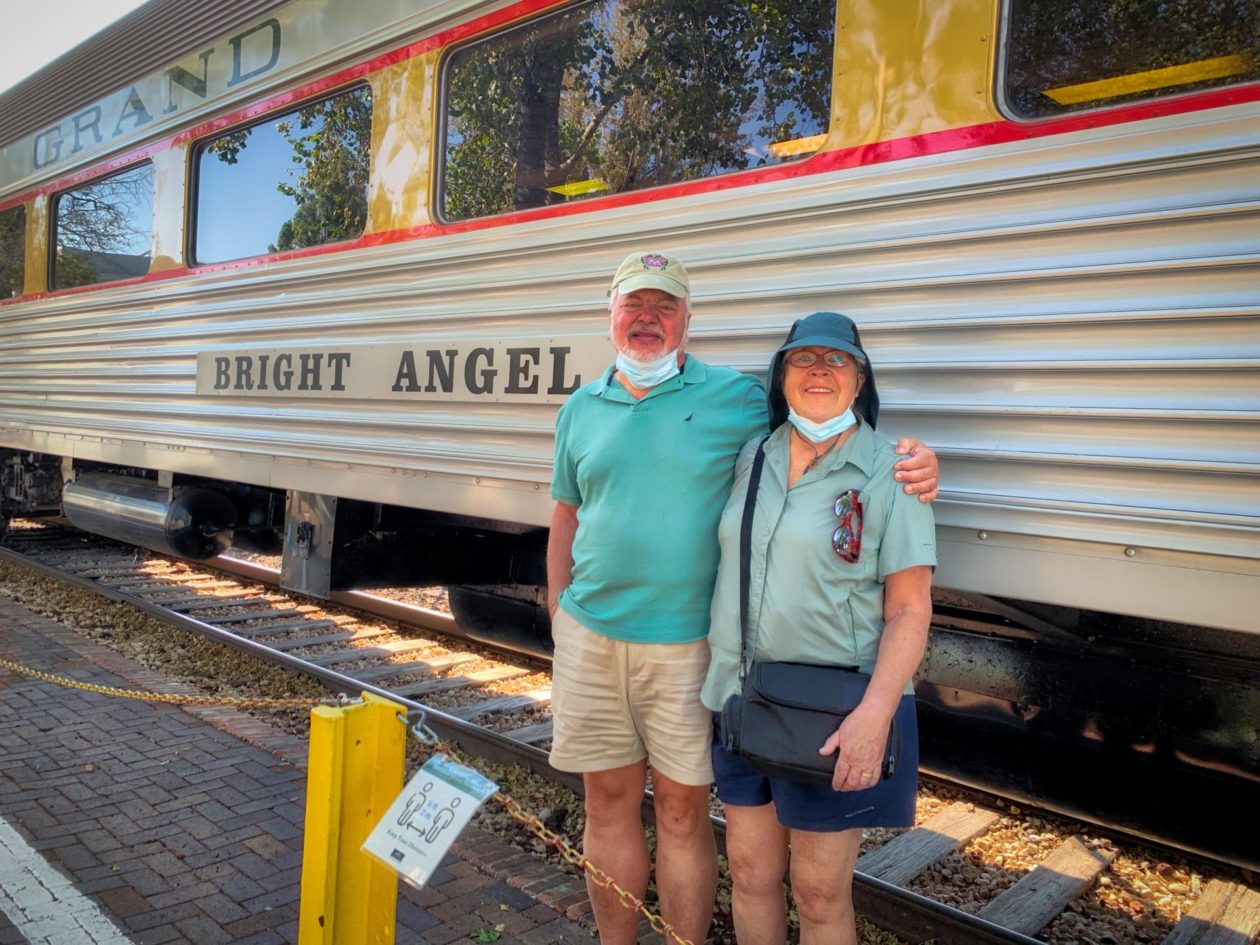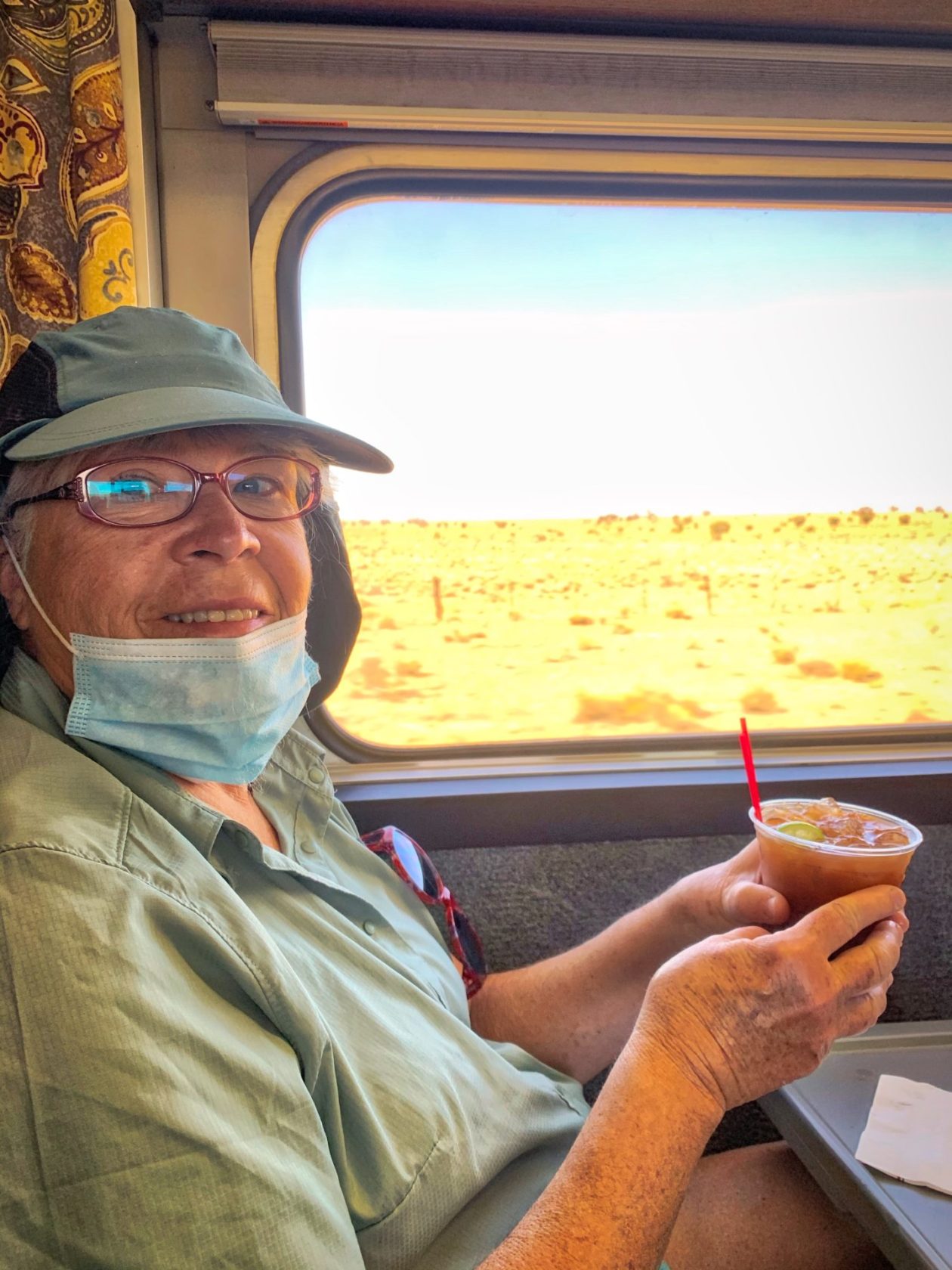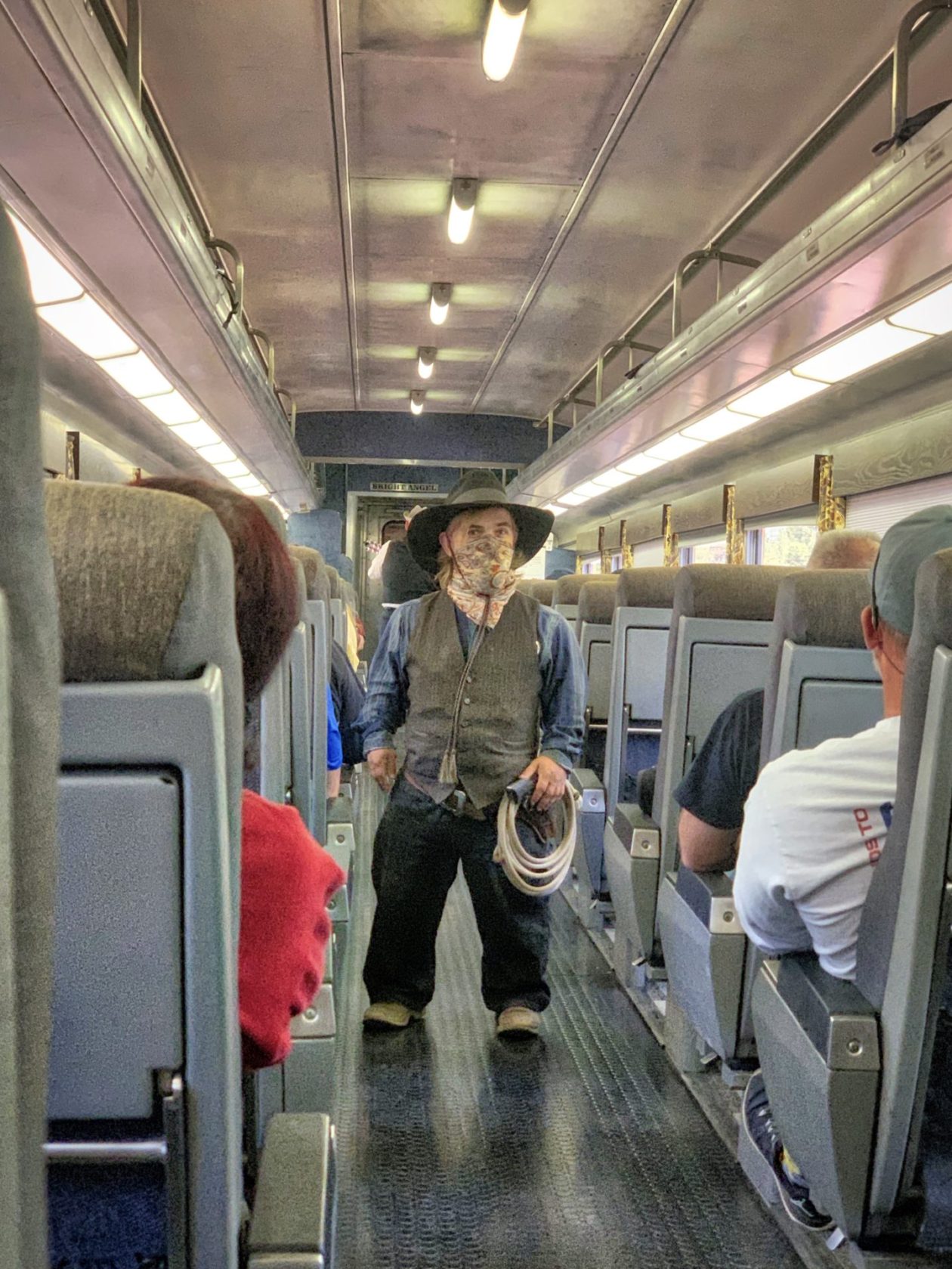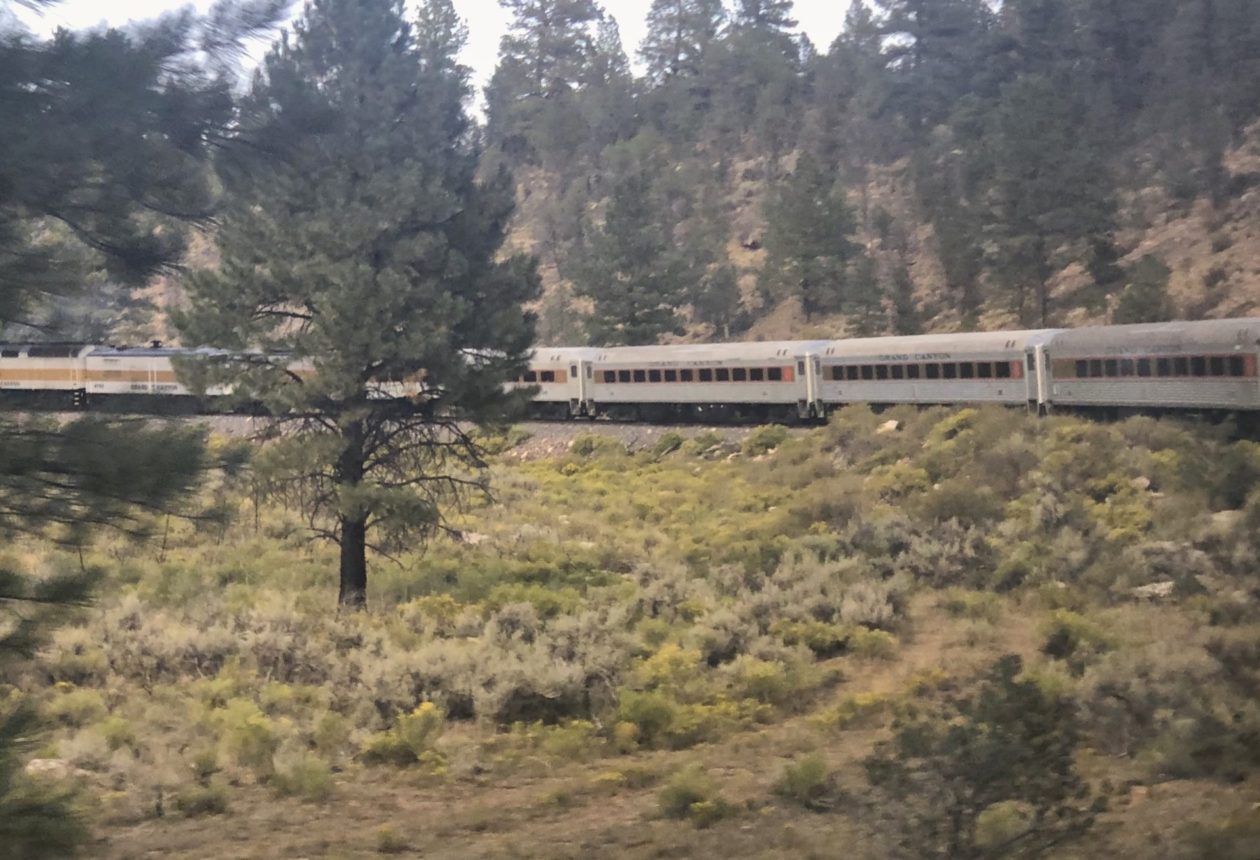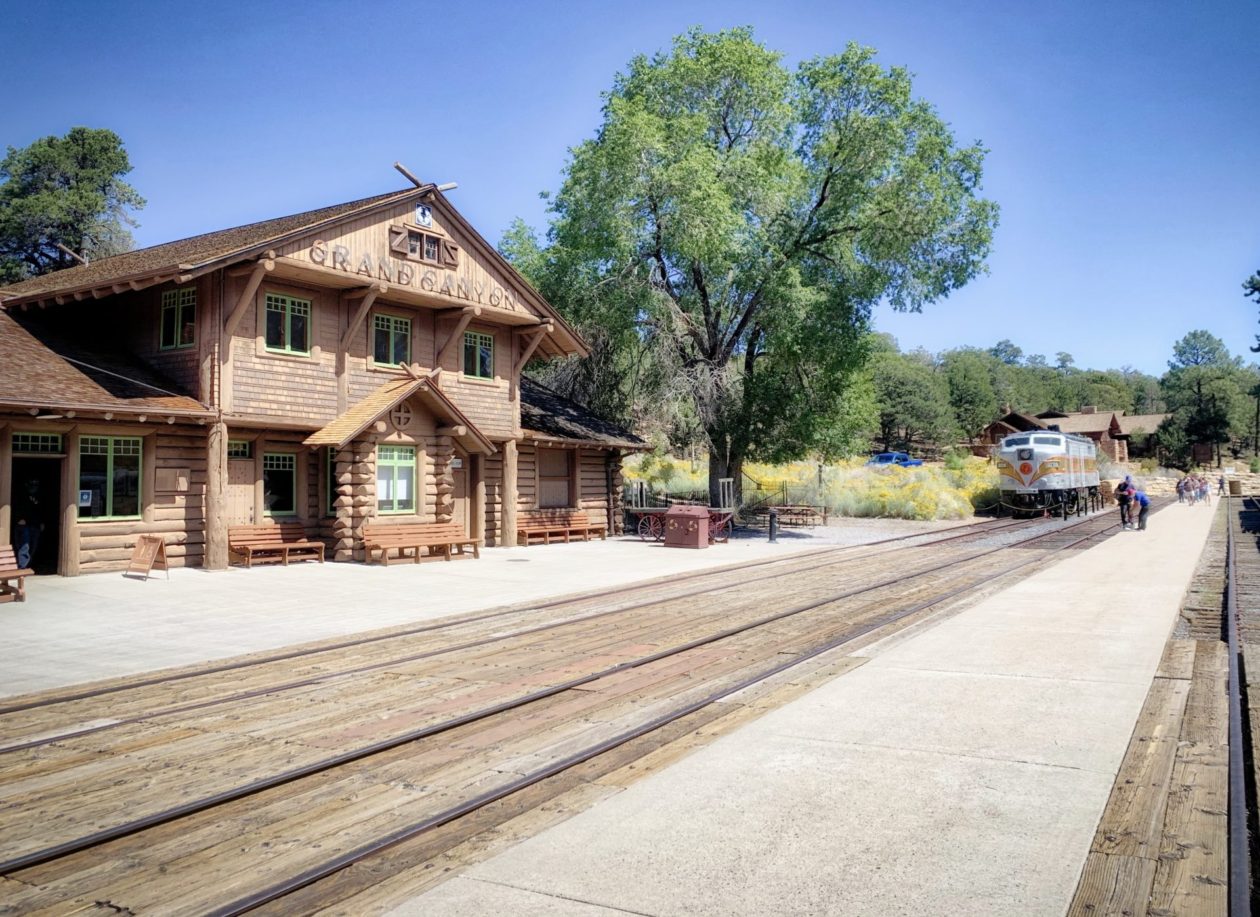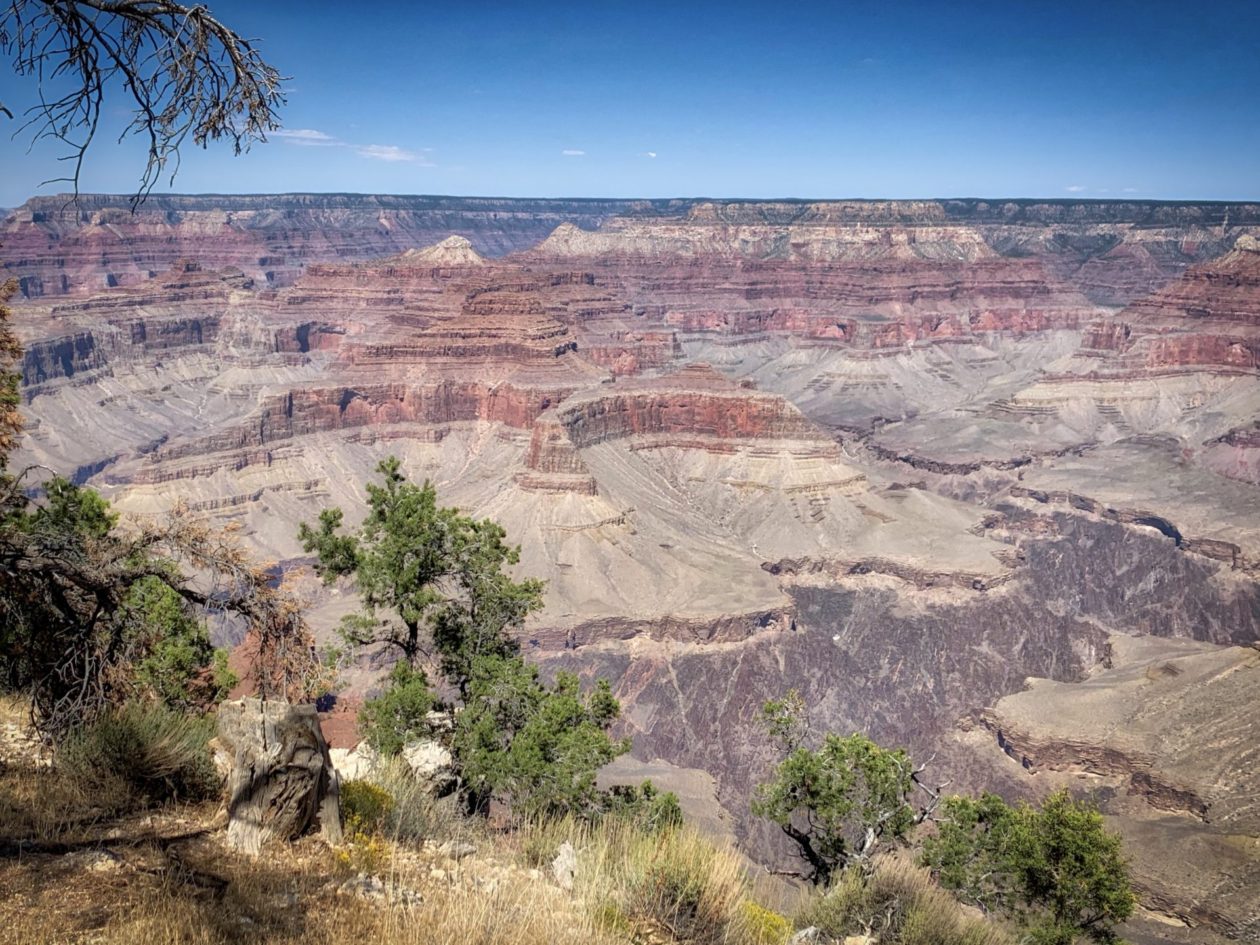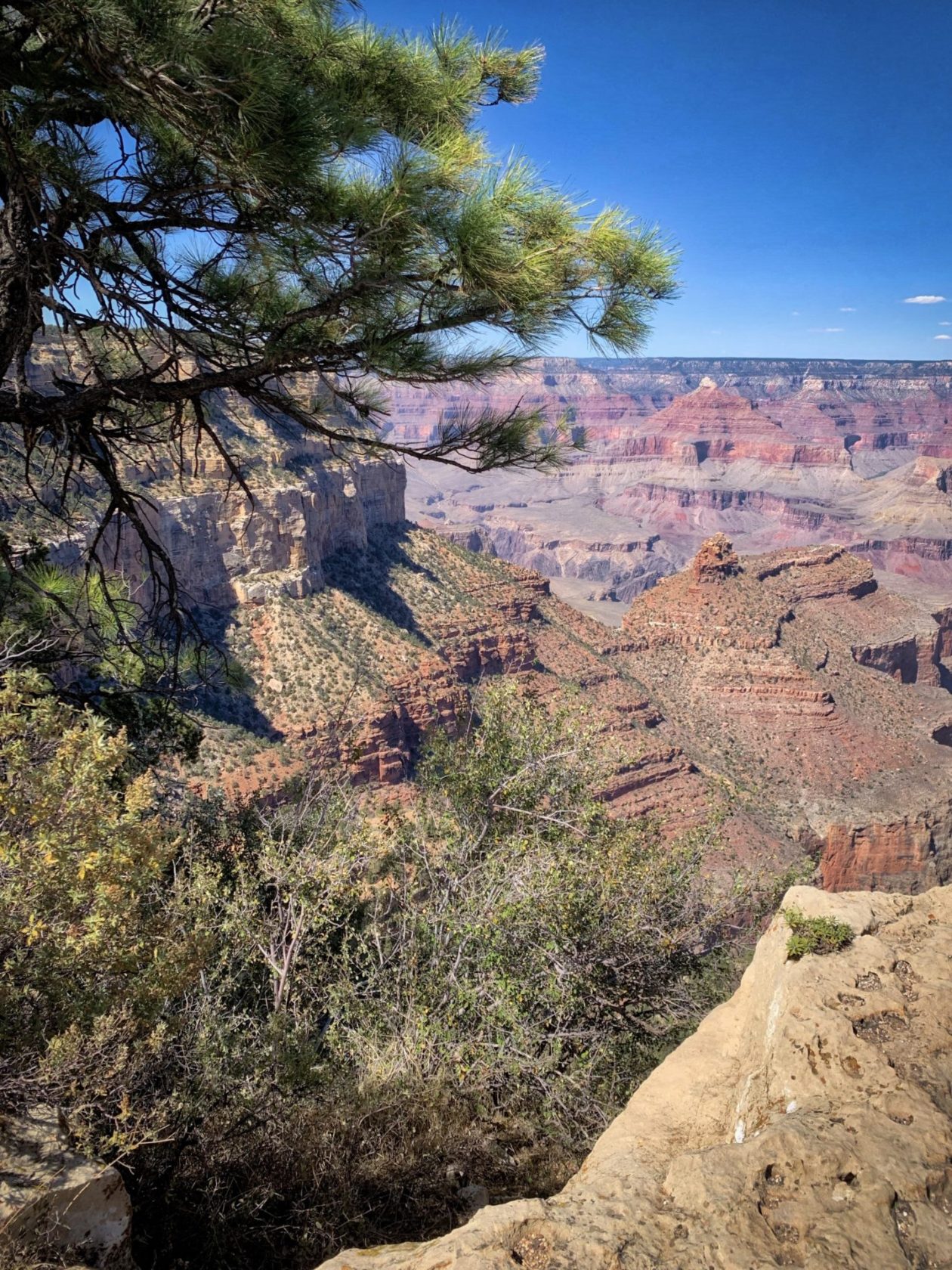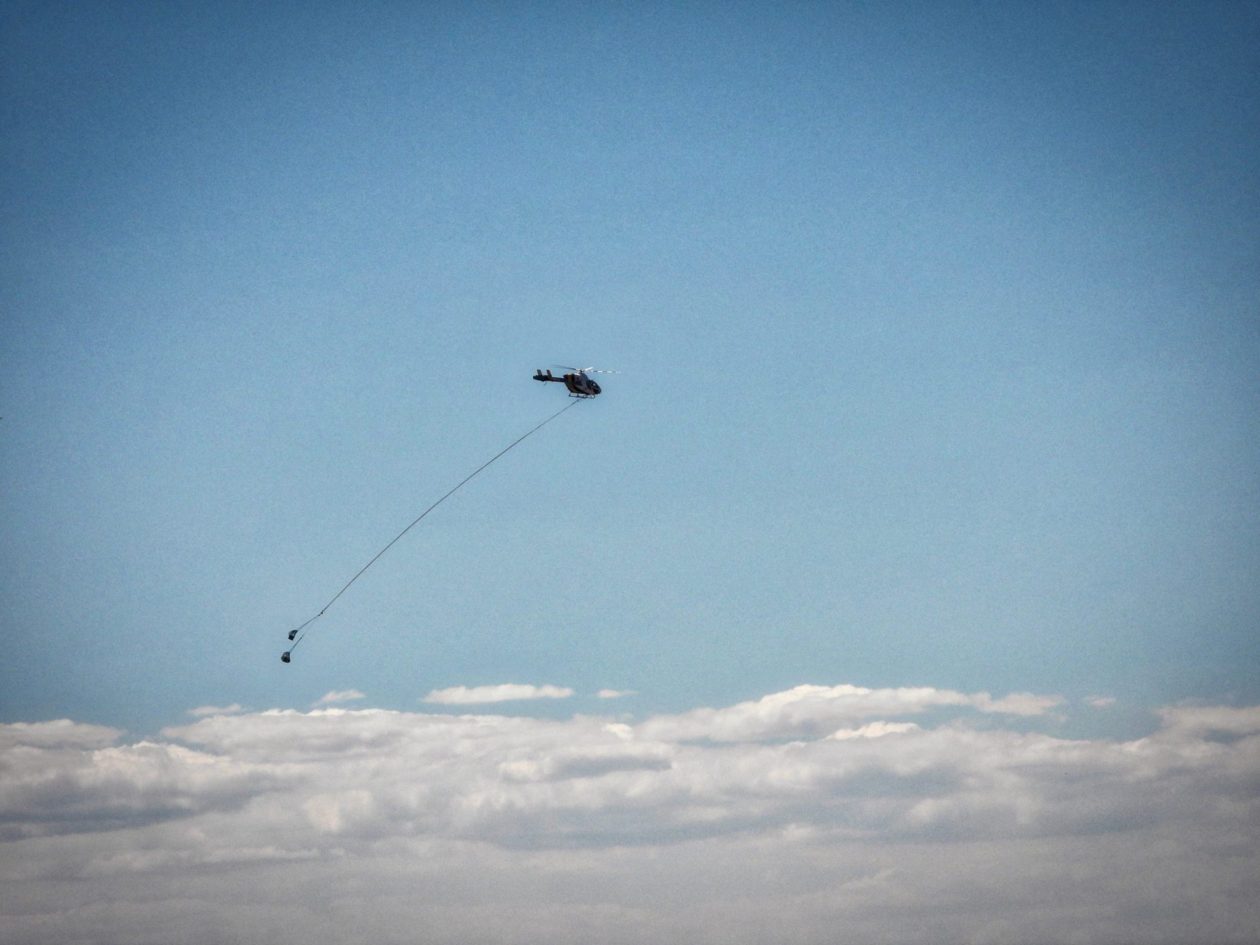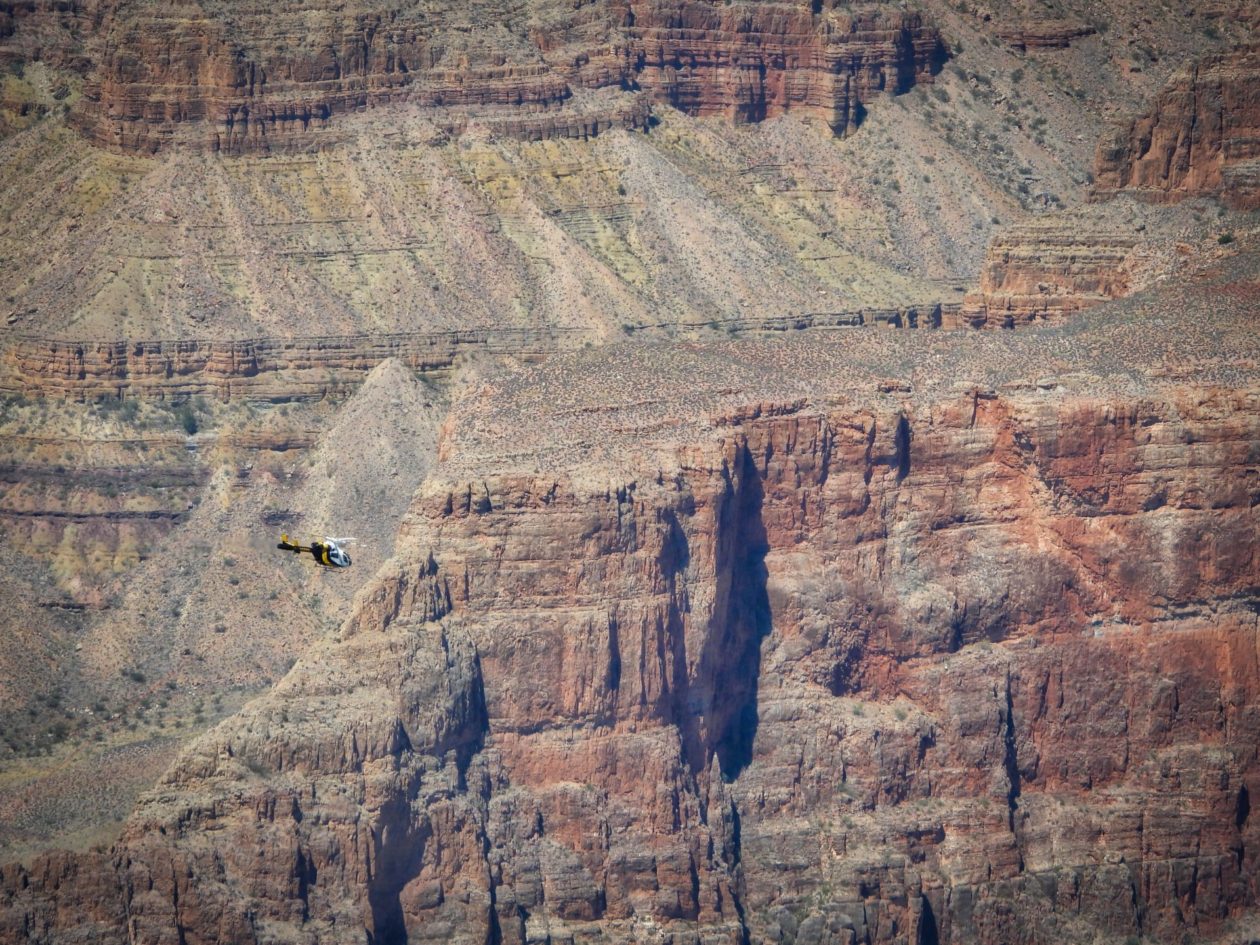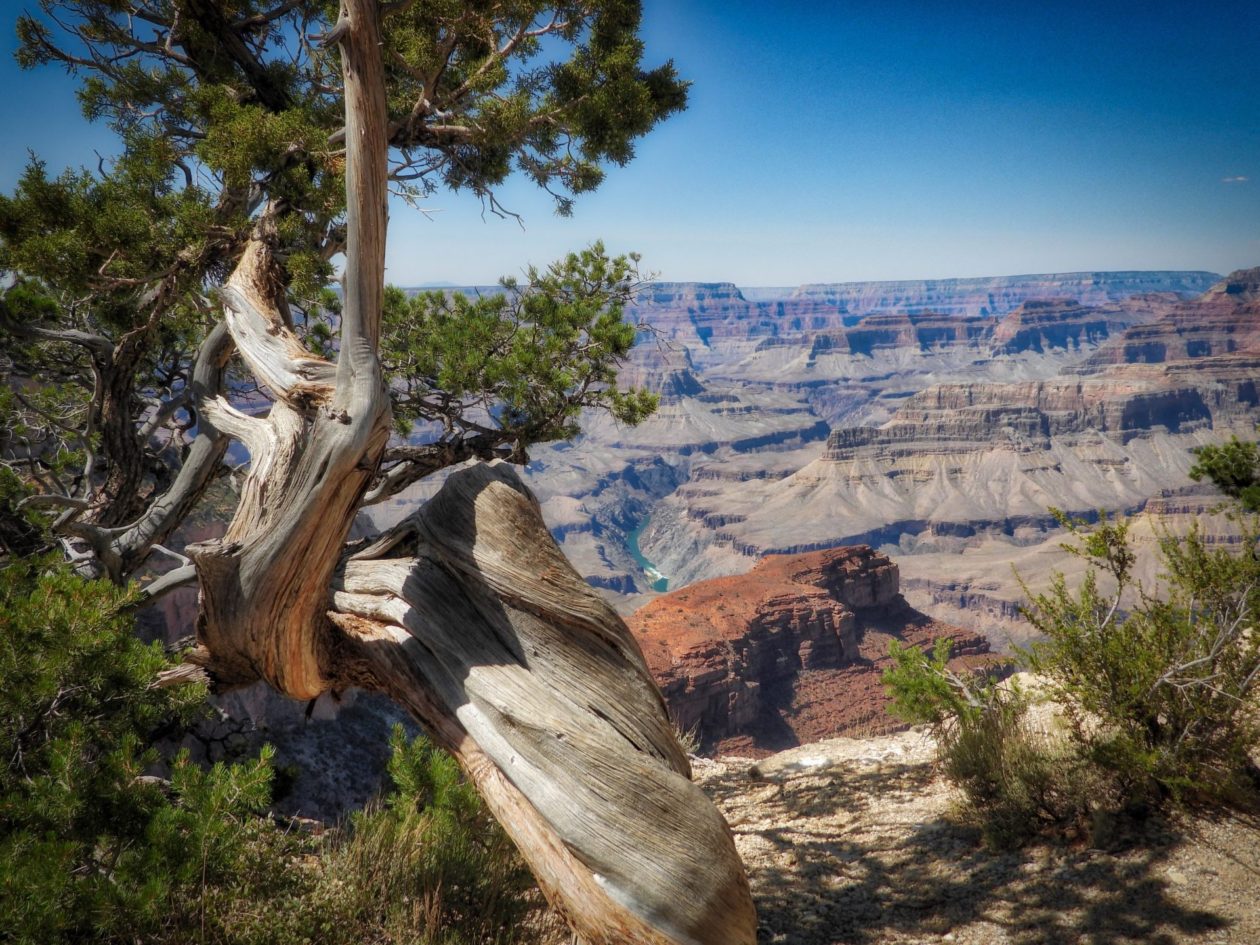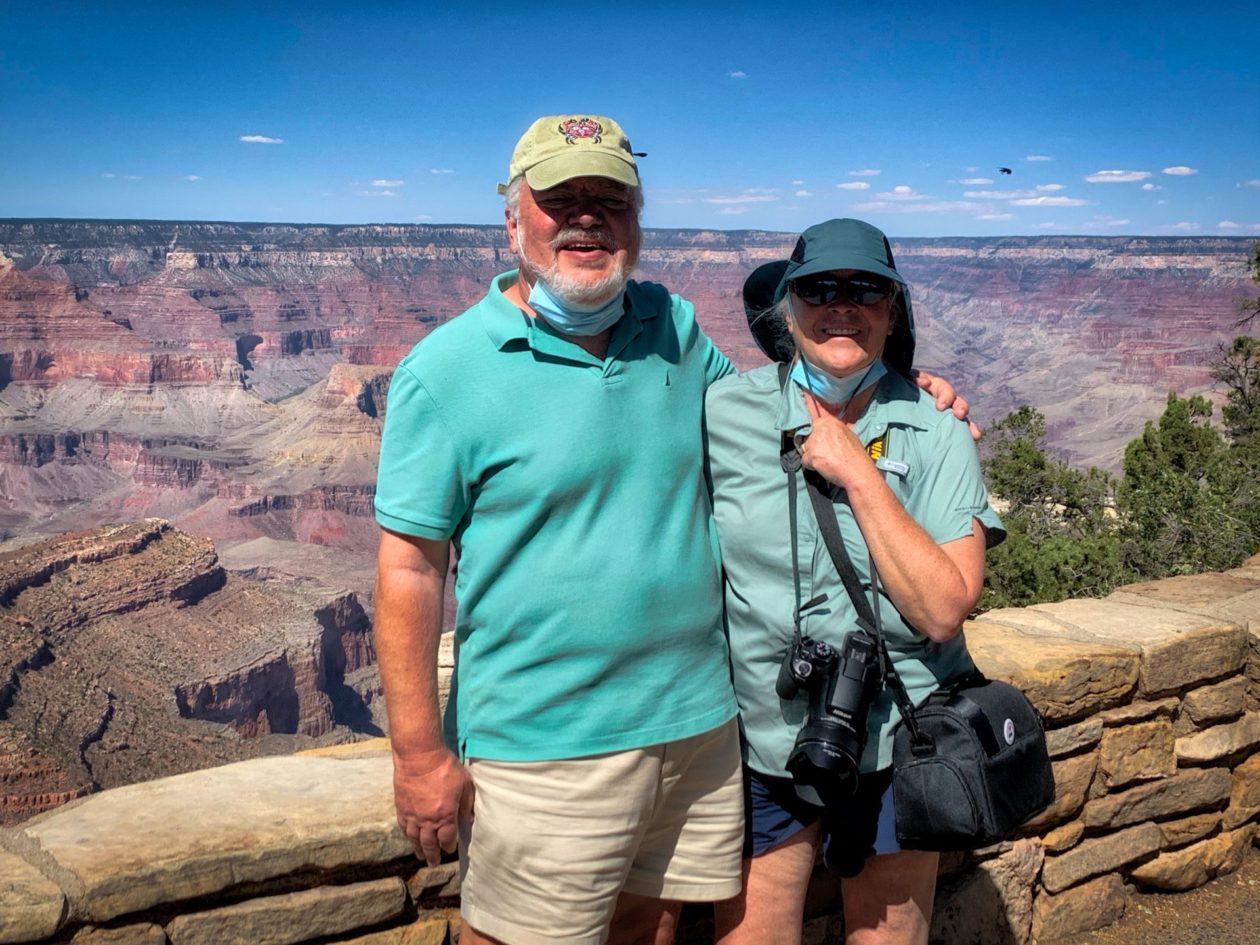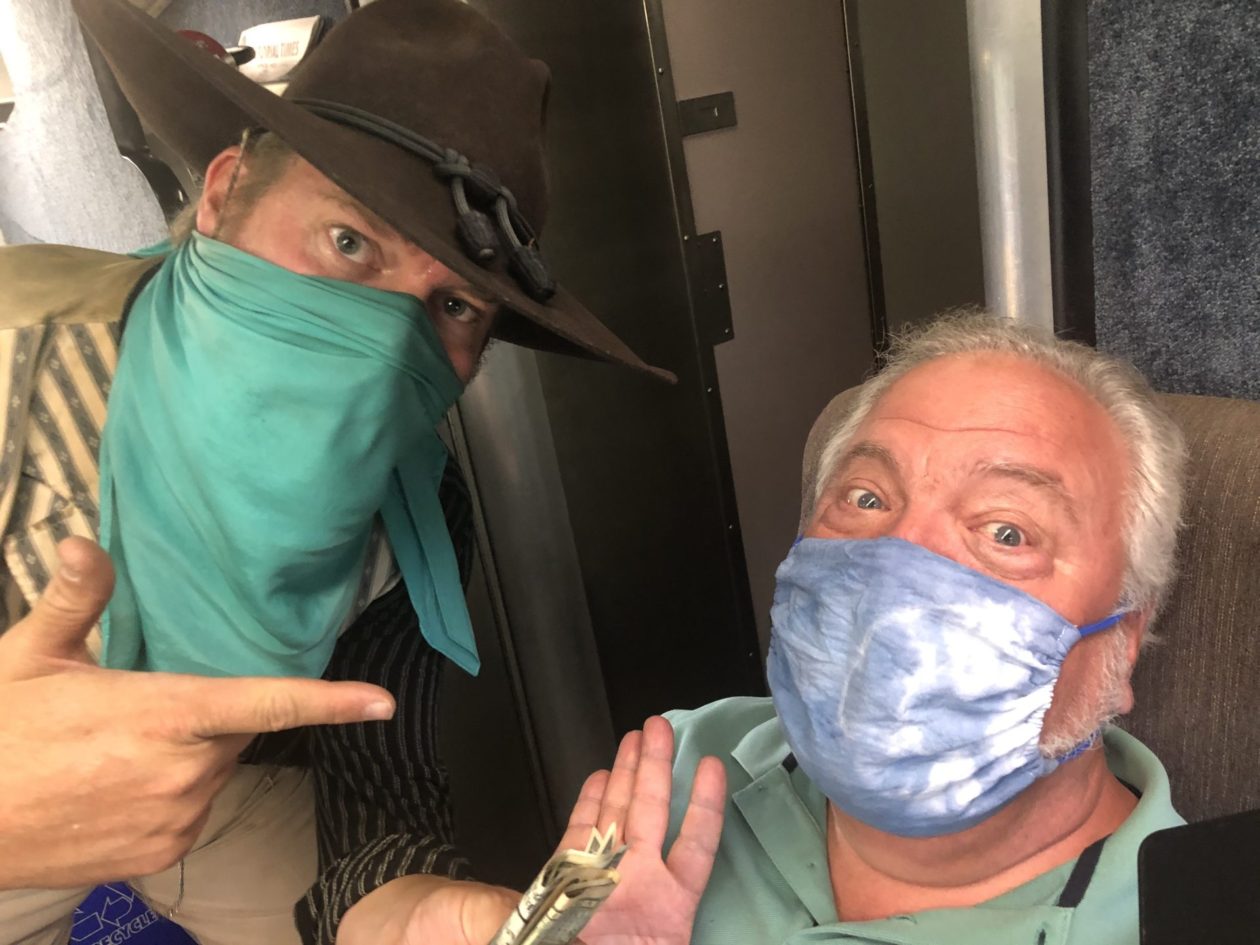- COVID and Fire Tour 2020 — Introduction
- A quick stop at Mt. Rainier
- A short visit to Mt. Hood
- An interesting (and largely eventful) time at Newberry National Volcanic Monument
- Lava Beds National Monument
- Fire Evasion!
- Avoiding Vegas — and loving it!
- Kickin’ Route 66 and the Grand Canyon
- Migration — Communities that share the land on their way to somewhere (like us!)
- Red Rockin’ Utah’s (and a little of Arizona’s) National Parks and Monuments
- The journey home and final thoughts
In travel, sometimes change is thrust upon you, and sometimes you just feel like changing. Our plan was to leave the Vegas area and to spend 3-4 days up at the South Rim of the Grand Canyon. We were doing that to kill some time before meeting up with some friends later in Utah. Because we had been to the South Rim before, we decided to mix it up a little bit. Instead, we headed down to Kingman, AZ to begin a trek along a section of Route 66 that we hadn’t done in the past.
For people who read this that aren’t familiar with it, Route 66 was the Mother Road — one of the original highways in the US highway system. But it was much more than that. It became a cultural symbol over the years. It saw the misery of desperate transit of the dust bowl Okies in search of the promised land of California, it saw the great expansion of highway travel of an increasingly mobile American, and it displayed the best of small town America along its route — “mom and pop” small businesses, kitschy buildings, etc. While much of Route 66 has gone away with the era of the interstates, Arizona still has the longest remaining stretch of the Main Street of America. People come from all over the world to ride this road and try to embrace that simpler time. We taken other sections before, so this time we traveled from Kingman to Williams, AZ.
We started off by looking around in Kingman. This is where actor Andy Devine grew up and you can see his name and photo all around town. I guess you have to be of a certain age to really know who Andy Devine was. He was a pretty versatile actor, but he is probably best known as Roy Rogers’ ever suffering sidekick. They also have a couple of passable museums about the area and Route 66. It was a good way to learn the history of how the Mother Road came to be and all the cultural changes that came with it — and ultimately faded away as Interstate 40 came into existence. They also had an electric vehicle museum and a special exhibit by a former resident artist, Robert Waldmire. We really liked his work; it was very reminiscent (maybe a bit too much) of artist R. Crumb. He did a lot of political cartoons and was an activist in every sense of the word, but he also had to make a living. His depictions of Route 66 are truly mind numbing. You need a magnifying glass and two aspirins to get through them.
About 60 miles past Kingman and half way to Williams is the little town of Hackberry. It is famous for its very kitschy general store which, of course, we had to visit. It has just about every kind of memorabilia associated Route 66 and a lot that’s not. One thing I hadn’t seen or heard about on our Rt. 66 sojourn was the old TV series “Rt. 66” with Martin Milner ( 1 Adam 12, see the woman…) and George Maharis (I don’t think I ever saw him again after this series. Anyway, it was an “On the Road” type series with two guys in a Corvette cruising along and having adventures. Anyway, the lady behind the counter took us over a couple of rooms and found a picture of them. It also turns out that they had the famous Corvette in front of their store for a number of years. We also wanted to go into town to see an old motor inn that Robert Waldmire was co-owner of and had illustrated. Unfortunately, the lady behind the counter told us that the whole town of Hackberry had been purchased by an individual and nobody from outside was allowed there. She had no idea what when on down there. Cult much?
Anyway, after a thoroughly fun drive (we couldn’t put the top down on the truck camper…), we arrived in Williams. This is another town that is trying to cash in on the nostalgia of the Mother Road. But, importantly, residents there said that had the Grand Canyon Railroad not been redeveloped, they would be a ghost town. It is a funky town that reminded us a lot of our old town in Colorado — Manitou Springs (old hippies, bikers, and assorted other characters running small shops selling the same gee gaw about the town (of course all made in China). But there are also some pretty decent restaurants and bars that we felt obligated to try. It was from there that we took the train to the South Rim of the Grand Canyon. The train is made up of old restored engines and cars and the service is fun, with lots of entertainment. They even have train robbers to add a little authenticity to the ride. It’s a great way to go to the canyon. Because of COVID, two of the three shuttle routes were not operating, so we took the Red Shuttle up to Mojave Point and walked along the trail to Powell Point. There really wasn’t any smoke, so we were able to get some great shots along the way. I have to admit, though, that my vertigo seems to have gotten worse over the past few years. At some points, the trail narrowed to about 3 feet, with a definite tilt towards the edge — with no railings, walls, etc. I got through it, but I was somewhat happy we were done.
Anyway, a great time along Rt. 66 and the Grand Canyon. Next we are heading to a series of national monuments north and south of Flagstaff that are focused on cliff-dwelling and pueblo people and how they lived their lives.
This entry was posted in Arizona, National Park/Monument, Travel, United States